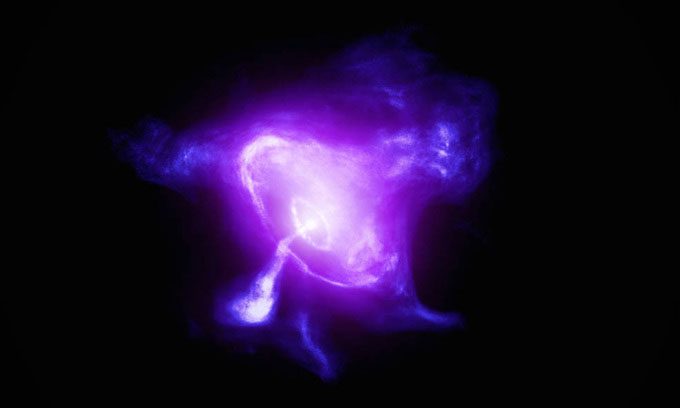The NASA X-ray Polarimetry Explorer (IXPE) satellite provides a new perspective on the Crab Nebula (NGC 1952), revealing astonishing details.
Located approximately 6,500 light-years from Earth in the constellation Taurus, NGC 1952 is the remnant of a supernova or an exploded star, famously known as the “Crab Nebula” due to its distinctive shape.

Crab Nebula NGC 1952 captured by IXPE satellite. (Image: NASA).
A new study published in the journal Nature Astronomy this week details how astronomers utilized IXPE to create a detailed and nuanced map of the magnetic field of NGC 1952, revealing more internal activity than ever before, helping to solve long-standing mysteries and opening up new questions for future research.
“What makes science beautiful and exciting is that in brief moments, you can see something that no one has ever seen before“, said Martin Weisskopf, the lead author of the study and an honorary astronomer at NASA’s Marshall Space Flight Center in Alabama.
Launched on December 13, 2021, IXPE’s mission is to study the polarization of X-rays emitted by celestial objects such as black holes and neutron stars. It employs three telescopes to measure the polarization of X-rays, providing information about the magnetic fields and other properties of these objects.
Data from IXPE indicates that the magnetic field of the Crab Nebula resembles that of a pulsar wind nebula, which also has a doughnut-like shape; however, in NGC 1952, scientists were surprised to find areas of asymmetric and patchy magnetic field disturbances that were more pronounced than expected.
This allows the research team to investigate not only X-rays from the nebula but also X-rays originating from the pulsar itself or the magnetic field surrounding it. Weisskopf suggests that these X-rays come from the outer magnetic field region, known as the “wind region”, though the exact mechanisms remain unknown. In the magnetic field, the shocks created by the pulsar’s wind are pushing particles to move at nearly the speed of light.
IXPE’s observations of the Crab Nebula are offering new insights into one of the most famous astronomical objects in the sky. The advanced technology of the satellite allows astronomers to study the nebula in unprecedented detail, revealing new information about its magnetic field and the processes that generate high-energy particles detected in cosmic rays. The IXPE mission will continue for at least another two years, during which it will investigate many other celestial objects to further unlock the mysteries of the universe.


















































